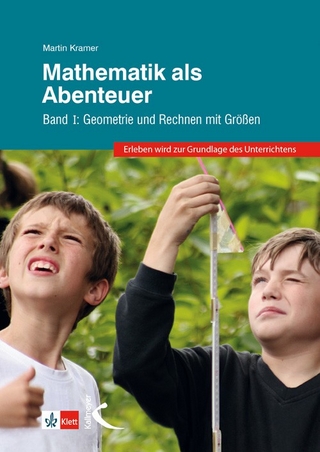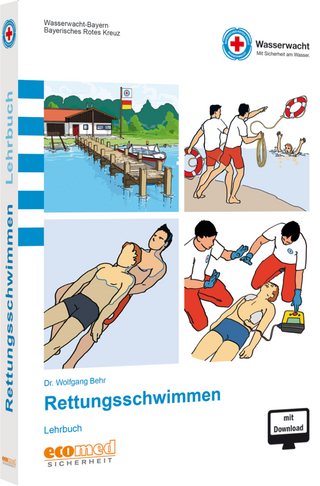
Advances in Cryogenic Engineering
Kluwer Academic/Plenum Publishers (Verlag)
978-0-306-38001-3 (ISBN)
- Titel ist leider vergriffen;
keine Neuauflage - Artikel merken
It is rather difficult to assign a definite temperature which serves to divide refrigerating engineering from cryogenic engineering. A temperature below _lSOoC, however, is generally associated with cryogenic engineering.
General Remarks.- A Few Remarks on the Beginnings of the NBS-AEC Cryogenic Engineering Laboratory.- Research Facilities of the NBS-AEC Cryogenic Engineering Laboratory.- Cryogenic Equipment.- A-1 An Efficient Vacuum-Jacketed Liquid Nitrogen or Liquid Oxygen Storage Vessel.- A-2 The Aluminum Dewar.- A-3 Liquid Oxygen Equipment for Use in Aircraft.- A-4 The Refrigerated Transport Dewar.- A-5 Helium Refrigeration.- A-6 The Herrick L. Johnston Air Tactical Dewar.- Cryogenic Equipment (continued).- B-1 Experimental Dewars Developed by the National Bureau of Standards.- B-2 A Re-liquefying Hydrogen Refrigerator.- B-3 Joining Aluminum to Stainless Steel.- B-4 The Transfer of Liquefied Gases.- B-5 A Transfer Line for Liquefied Gases.- B-6 Performance of an Air Expansion Engine.- B-7 A High-Vacuum Seal-Off Valve.- Low Temperature Instrumentation.- C-1 Carbon Resistors, Pressure Transducers and Vibration Pickups Used for Measurements of Temperature, Pressure and Vibration at Liquid Hydrogen Temperatures.- C-2 Continuous Analysis of Ortho-Parahydrogen Mixtures.- C-3 A Constant Temperature Control System for the Range, Room Temperature to -320 F.- C-4 A Hydrogen Gas Meter Unit with Remote Totalization of Flow.- C-5 Pulsation Damping.- C-6 The Application of Commercial Electrical Equipment to Locations where Hydrogen Gas May Exist in Quantities Sufficient to Produce Explosive or Ignitable Mixtures.- C-7 Behavior of Electrical Insulation Materials and of Halogenated Hydrocarbon Refrigerants at Temperatures of -100 to -200 F.- Low Temperature Instrumentation (continued).- D-1 Thermistor Indicating Flowmeter for Low Flow Rates of Nitrogen and Hydrogen Gases.- D-2 A Sensitive Electronic Liquid Level Indicator for Condensed Gases.- D-3 Low Temperature Electrical Resistance of Fifteen Commercial Conductors.- D-4 Carbon Resistors and Variable Differential Transformers for Liquid Level Indication.- D-5 Glass in Cryogenics.- D-6 Modification of a Calorimetric Oxygen Detector for Use with Non-Equilibrium Hydrogen.- D-7 An Optical Means of Liquid Level Sensing.- D-8 Trace Oxygen Analysis for Liquid Hydrogen Production.- Cryogenic Applications.- E-1 Helium Production Process.- E-2 Low Temperature Liquids as Coolants in Guided Missiles.- E-3 The Application of Low Temperature Processes in Production of Chemicals.- E-4 Cryogenic Engineering in the Production and Distribution of Liquefied Atmospheric Gases.- E-5 Carbon Dioxide in Low Temperature Testing.- Low Temperature Insulation.- F-1 Performance of Heat Insulating Materials Down to 20 K.- F-2 Vacuum-Powder Insulation.- F-3 Thermal Radiation Absorption by Metals.- F-4 Styrofoam (Expanded Polystyrene) Insulation at Low Temperatures.- Properties of Materials.- G-1 The Mechanical Properties Testing Program at the NBS-AEC Cryogenic Engineering Laboratory.- G-2 Apparatus for Tensile Testing in the Temperature Range of 4.2 to 300 K.- G-3 The Compressive Strengths of Some Technical Metals Between 4.2 and 300 K.- G-4 Low Temperature Kiloatmosphere Apparatus.- G-5 Thermal Conductivity of Solids at Low Temperatures.- G-6 Accurate Measurement of Certain Physical Properties Down to 20 K.- G-7 A New Criterion for Superconductivity in Metals.- Special Cryogenic Equipment and Processes.- H-1 The Cryostat in Industrial Research.- H-2 The Gas Phase Heterogeneous Catalysis of the Ortho-Parahydrogen Conversion at Low Temperatures Under Pressure.- H-3 The Liquid Phase Heterogeneous Catalysis of the Ortho-Parahydrogen Conversion at Low Temperatures Under Pressure.- H-4 Ortho-Parahydrogen Conversion Studies.- H-5 Safety Engineering as Applied to the Handling of Liquefied Atmospheric Gases.- H-6 Vibration Testing of Airborne Cryogenic Equipment.- H-7 Thermal Oscillations in Low Temperature Apparatus.- Cryogenic Processes.- J-1 Theory Versus Practice in Low Temperature Engineering.- J-2 Freon Cascade Refrigerator for Liquid Air Plant Precooler.- J-3 Mobile Liquid Hydrogen Plant.- J-4 Performance of NBS Hydrogen Liquefier Plant.- J-5 Manufacture, Liquefaction and Distribution of Dry Ice and Liquid Carbon Dioxide.- J-6 The Effect of Some Variables in Low Temperature Processes.- Author Index.- List of Delegates.
| Zusatzinfo | biography |
|---|---|
| Sprache | englisch |
| Themenwelt | Schulbuch / Wörterbuch |
| ISBN-10 | 0-306-38001-3 / 0306380013 |
| ISBN-13 | 978-0-306-38001-3 / 9780306380013 |
| Zustand | Neuware |
| Haben Sie eine Frage zum Produkt? |
aus dem Bereich


